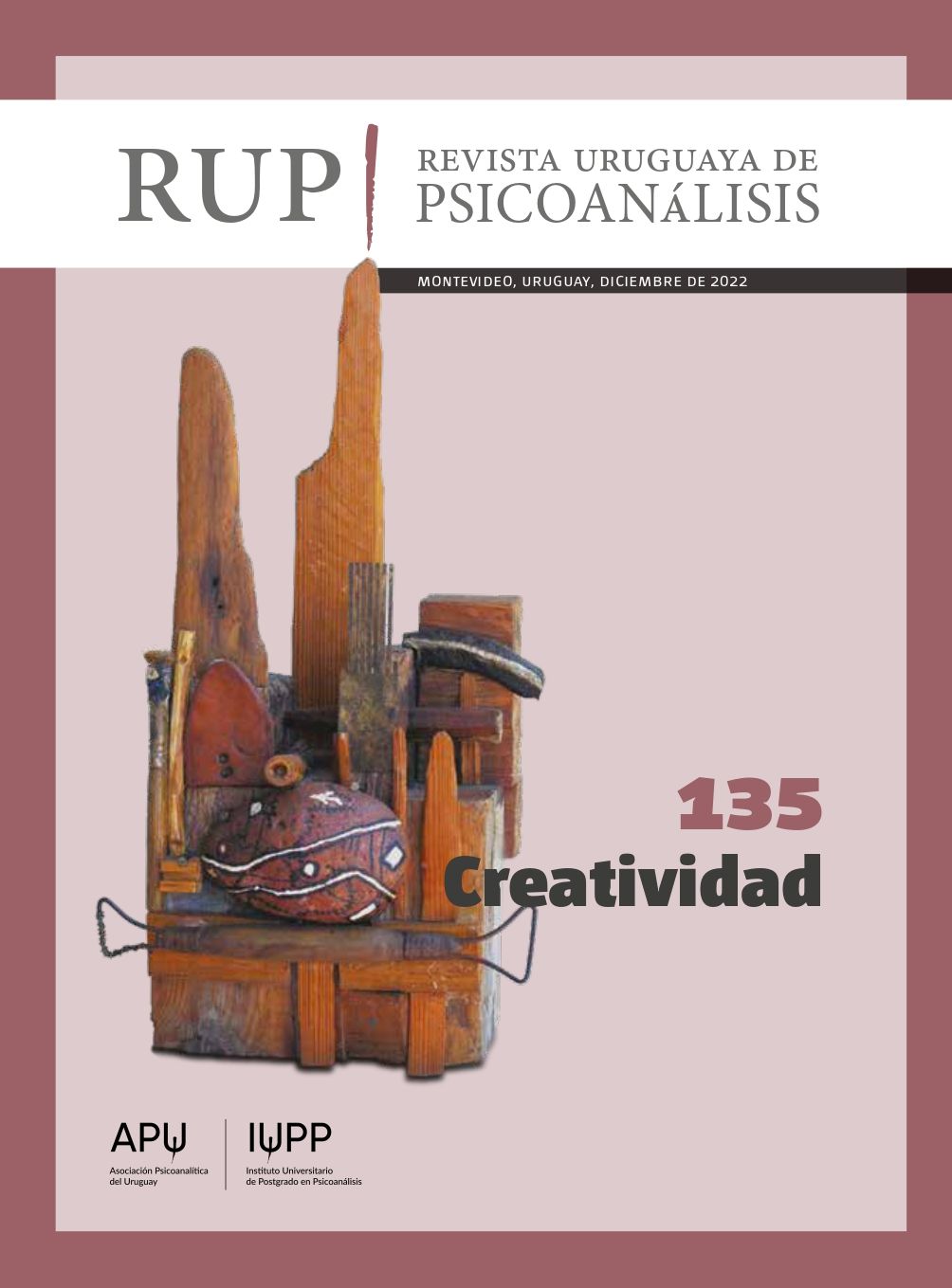Keys and locations of creativity. Between the wish and the prohibition, transgression
DOI:
https://doi.org/10.36496/n135.a1Keywords:
creativity, transgression, sublimation, imagination, prohibition, clinical material, childAbstract
The hypothesis put forward by this paper is that the creative process requires, from the psychic perspective, that something akin to transgression is at stake, swinging between what is permitted and what is repressed. Such condition is based on the need to dodge the costs of an inexcusable social construction of the individual. It is also suggested that there are some dimensions which support the creative act, common to different human activities and domains, regardless of the uniqueness of the person who creates.
The paper then resorts to three diverse scenarios to illustrate this hypothesis. The first one, Charles Darwin, as a testimony of
transgression in scientific thinking, while, following Freud, the other face of that transgression will be displayed (its rigorous and methodic character). In the second scenario, a clinical psychoanalytic vignette shows a six-year-old boy who does not submit to the official version of a legend, provides a reflexive intervention, thus recreating his psychic functioning. In the third case, a family scene reveals the creativity of a girl of three who gives a different version (alters) the fictional plot of a piece of children’s literature.
Downloads
References
Anscombre, J. C. (1995). Semántica y léxico: Topoi, estereotipos y frases genéricas.Revista Española de Lingüística, 25(2),297-310.
Bruner, J. (1991). Actos de significado: Más allá de la revolución cognitiva. Alianza.
Bruner, J. (2003). La fábrica de historias:Derecho, literatura, vida. Fondo de Cultura Económica.
Castoriadis, C. (1998). Hecho y por hacer: Pensar la imaginación. Eudeba. (Trabajo original publicado en 1997).
Corominas, J. (1997). Breve diccionario etimológico de la lengua castellana. Gredos. (Trabajo original publicado en 1961).
Darwin, C. (1946). Carlos Darwin: Memorias y epistolario íntimo. Elevación.
Darwin, E. (2009). Una memoria familiar. https://www.nexos.com.mx/?p=13392.
Eco, U. (1983). El nombre de la rosa. Lumen.(Trabajo original publicado en 1980).
Freud, S. (1976a). La interpretación de los sueños. En J. L. Etcheverry (trad.), Obras completas (vol. 4). Amorrortu. (Trabajo original publicado en 1900 [1899]).
Freud, S. (1976b). La interpretación de los sueños. En J. L. Etcheverry (trad.), Obras completas (vol. 5). Amorrortu. (Trabajo original publicado en 1900-1901).
Freud, S. (1976c). Olvido de impresiones y de designios. En J. L. Etcheverry (trad.), Obras completas (vol. 6, pp. 134-159). Amorrortu. (Trabajo original publicado en 1901).
Gould, S. J. (2012). El pulgar del panda. Crítica. (Trabajo original publicado en 1980).
Green, A. (1996). La metapsicología revisitada. Eudeba. (Trabajo original publicado en 1995).
Kachinovsky, A. (2012). Estudio de caso: «El capellán del diablo». En A. Kachinovsky, Enigmas del saber: Historias de aprendices (pp. 155-177). Universidad de la República.
Mayr, E. (1992). Una larga controversia: Darwin y el darwinismo. Crítica.
Montejo, V. (adaptador) (1999). Popol Vuj: Libro sagrado de los Mayas. Artes de México.
Morin, E. (1992). El paradigma perdido. Kairós.
Ogden, T. (1992). La frontera primaria de la humana experiencia. Julián Yebenes.
Root-Bernstein, R. y Root-Bernstein, M. (1997). El secreto de la creatividad. Kairós.
Schweber, S. (1977). The origin of the «origin» revisited. Journal of the History of Biology, 10(2), 229-316.
Schkolnik, F. (2007). El trabajo de simbolización: Un puente entre la práctica psicoanalítica y la metapsicología. Revista Uruguaya de Psicoanálisis, 104, 23-39.
UNO Internacional [UNOi] (2016). Los secretos de la creatividad. ttps://mx.unoi.com/2016/03/02/los-secretos-de-lacreatividad/.
Urribarri, F. (2012). André Green. El pensamiento clínico: Contemporáneo, complejo, terciario. Revista Uruguaya de Psicoanálisis, 114, 154-173.
Downloads
Published
Issue
Section
License
Copyright (c) 2023 Revista Uruguaya de Psicoanálisis

This work is licensed under a Creative Commons Attribution 4.0 International License.


 This work is licensed under a
This work is licensed under a 